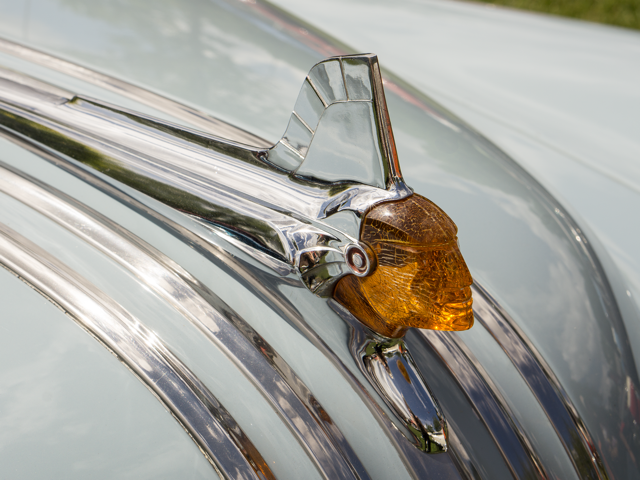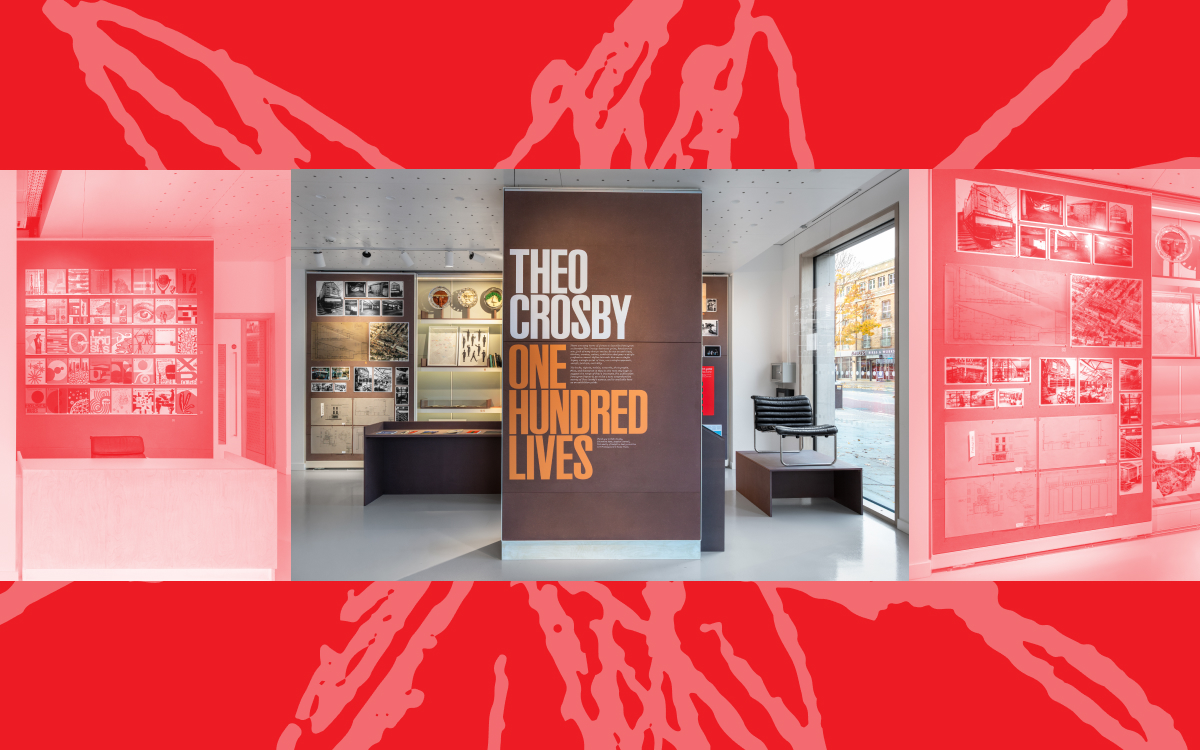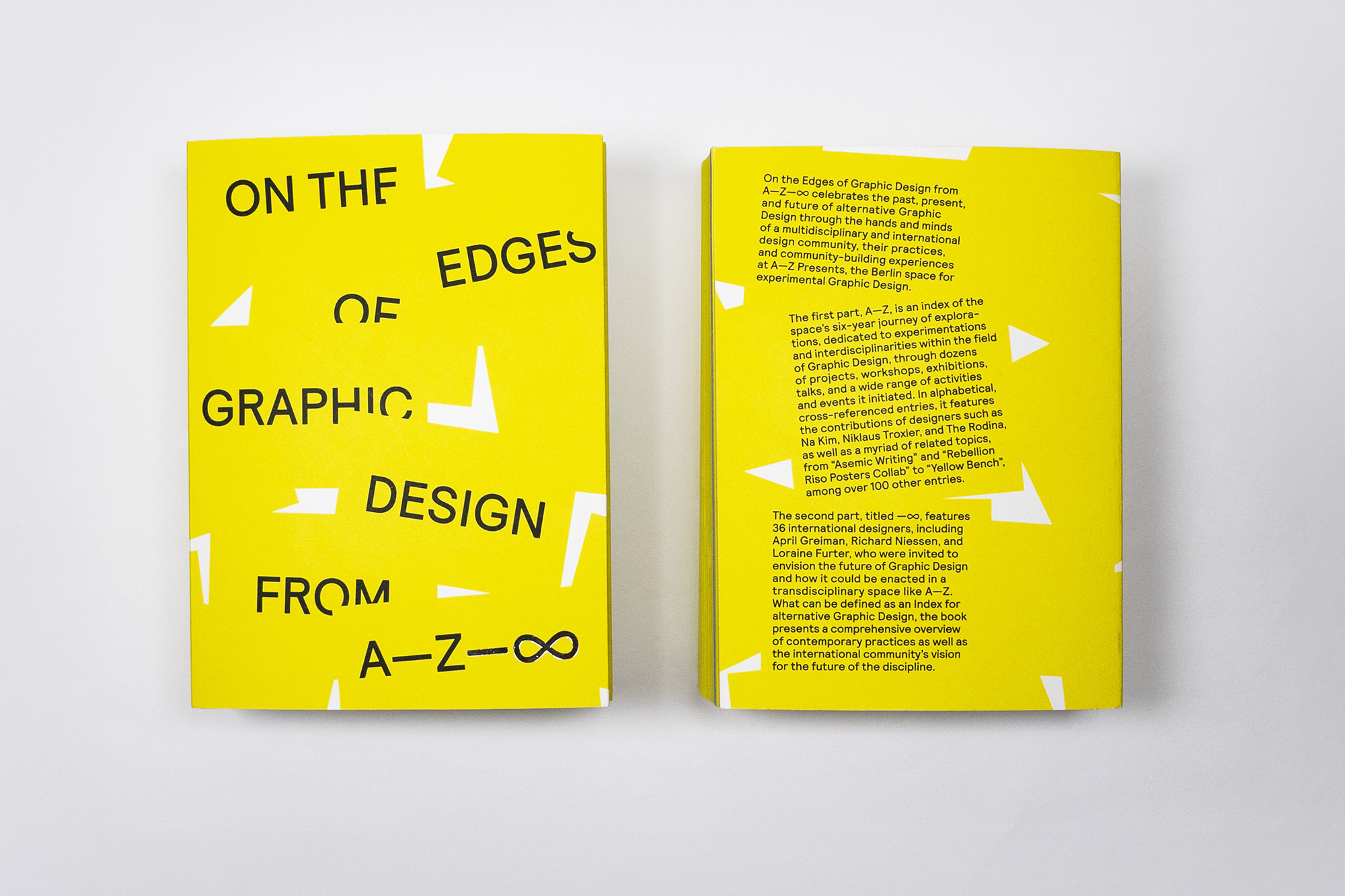A Mustang could outrun a Comet in midcentury America. Like others at the time, these cars sported names that reflected the country’s twin obsession with the past and the future. As the United States began to explore the frontiers of space, American TV viewers were enthralled by another frontier: the legendary Old West. Throughout the 1950s and 1960s, Westerns consistently garnered top spots in TV ratings (during one week in 1959, the genre accounted for eight of the top 10 shows). Americans keenly followed the Space Race, too, with 135 million viewers watching as John Glenn orbited the Earth in 1962. The auto industry took notice of this Janus-like zeitgeist, introducing cars with evocative names like Apache, Mustang, Comet, and Nova. Across the nation, Ford showrooms displayed Rancheros and Galaxies side-by-side.
No car better represents this dichotomy than the 1955 Pontiac Star Chief. For several decades, the brand’s mascot had been a visual representation of Pontiac, the 18th-century Native American leader who led a rebellion against the British. Busts of Pontiac graced the hoods of the company’s post-war models at a time when other manufacturers chose futuristic airplanes and rockets. Not to be outdone, Pontiac gave the chief wings, and in 1955 the car displayed one of the most bizarre hood ornaments ever: the head of the historic Odawa warrior affixed to the fuselage of a modern jet. Other cars, too, straddled the line between past and future, creating a mash-up of imagery. The Studebaker Conestoga, for example, celebrated both the historic frontier and the final frontier with a name commemorating the company’s legacy of building covered wagons and a hood ornament shaped like a soaring jet.

This intersection of past and future was a recurring theme in post-war America. The legendary West with its wild horses and “wild” Indians symbolized a mythic freedom with broad appeal. Individual independence felt like it was being sucked away in a postwar lifestyle dominated by the organizational man and cookie-cutter suburbs. The percentage of Americans who owned their own businesses was declining and family farms were being assimilated into corporate enterprises. The buoyant optimism following World War II gave way to a haunting fear as people came to the realization that the nuclear bomb that ended the war could be the end of civilization. The frontiers of space took on a new dimension as a possible escape route from a doomed planet. In this atmosphere, both Frontierland and Tomorrowland became mainstay attractions at Disneyland after it opened in 1955. Even the original Star Trek series brought past and future together in a retro episode set at the O.K. corral.
The Western construct offered a viable merchandising approach that appealed to car buyers on a subliminal level. The image of the proud savage, in particular, represented fierce self-reliance as well as a stand against society’s seemingly increasing rigid structure. Pontiac wasn’t the only company to co-opt Native American references to market cars. Tribal nations saw their names attached to the Chevrolet Apache, Jeep Cherokee, and Chevrolet Cheyenne.

Images of the historic Native American chieftain, Pontiac, were co-opted in the marketing of Pontiac automobiles from the 1920s through the 1950s. Photography by Anne Brownfield Brown.
Ford dipped into Native American legends with the Thunderbird. Though the mascot’s design changed through the years, it maintained a visual connection to its roots in Southwestern Indian art. The model name was a particularly fortuitous choice, alluding not only to the country’s indigenous heritage but also to its technological future. The car debuted at the Detroit auto show in 1954, just months after the U.S. Air Force Thunderbirds Squadron had begun wooing audiences with their Thunderjet air show. When a 4-passenger convertible model was introduced several years later, Ford’s ad agency doubled down on both references with an ad illustrating the car’s passengers waving gleefully as a plane and the Thunderbird icon soared overhead.
Riffing off Ford’s successful branding for the Thunderbird, Pontiac applied a similar approach when it introduced the Firebird in 1967. The car’s first iteration displayed a small emblem based on indigenous symbols that designer Norman James had seen at an Arizona airport. By 1973, the emblem had exploded into an outsized rendition of a flaming mythological phoenix, gracing the hood of the souped-up Firebird Trans Am.
The wildly popular Mustang hit dealer showrooms in 1964. Although the car was named in honor of the WWII P-51 Mustang fighter plane, its imagery was purely equestrian: an emblem of a wild horse galloped across the front grill, fenders, and gas cap of the first generation of Mustangs. The horse on the front grill was enclosed in a frame that Ford designers referred to as a corral. The Mustang was so successful that it prompted a new category of compact cars with high-performance engines, dubbed “pony cars.”

Ford added another performer to its stable with the introduction of their first SUV, the Bronco, which shared a name with the long-running TV series on ABC. The influence of TV Westerns is notable, if only coincidental, in the names of several models of mid-century cars: the Plymouth Fury began production in 1955, the same year NBC aired its show about a horse called Fury and the Ford Maverick shared its name with a popular television series on ABC. The Maverick extended the Western aura into its logo which featured steer horns emerging from the letter ‘v’ and an introductory ad portraying salty Gold Rush miners.
While mid-century Americans were re-inventing their past through TV Westerns, they were also looking towards the future. The Space Race heated up with the Russian launch of Sputnik in 1957 and imagery of jets and rockets frequently embellished cars throughout the 1950s. Early on, Oldsmobile capitalized on consumers’ interest in rocketry to promote its own technological prowess. Its first jet-inspired hood ornaments appeared on the 1948 Futuramic car. Advertising defined Futuramic as “a brand new word that fills a gap in our vocabulary. It means ‘the dramatic design of the future’ — the finest of functional modern design in any field.” The futuristic theme continued with the introduction of the Oldsmobile 88 and its advanced Rocket V-8 engine. A chrome-plated jet glided atop the car’s hood. Ads illustrated people perched on flying rockets and encouraged consumers to “Make a date with a Rocket 8.”
Space was a natural fit for automotive marketing, implying the cars carried the latest in technology. Space-themed names also worked on a deeper level by transferring the perception of a free-reigning exploration of the galaxy to the freedom of the open road. Oldsmobile launched the Starfire, the Jetstar, and the turbo-charged Jet Fire. Other manufacturers joined in with a bevy of models including the Plymouth Satellite, the Ford Galaxie, and the Mercury Comet. (The Buick Apollo was a latecomer to the trend for space names making its debut in 1973, just months after NASA had concluded the last Project Apollo Mission.)
By the mid 1970s, the frontiers of outer space and the old West had lost some of their luster. The Space Race officially ended when the United States and the Soviet Union teamed together to crew the International Space Station in 1975. That same year, none of the top 20 television shows were Westerns.
Nostalgia for a mythic past and the utopic freedom it represented was overshadowed as Americans grappled with freedom in the present tense. Active liberation movements of the seventies worked to secure rights for previously disenfranchised groups. Growing environmental concerns cast harsh lights on the automobile. Meanwhile, a sea change was transforming the industry as sales of foreign imports surged to unprecedented levels, disrupting Detroit’s hegemony.
Auto buyers today are no longer wooed by cowboys and astronauts, perhaps because the freedom of the open road doesn’t seem quite so free as millions of more cars clog the highways. The number of registered vehicles in the U.S. has increased 10-fold since 1950. Cars have become one of the necessary evils of modern life. More importantly, the internet has changed the way people buy automobiles. Easy access to a plethora of online reviews and ratings has diminished the impact of advertising. While Western references still hold sway—note the continued success of the Mustang, Bronco and Cherokee—astronomical imagery, like the Space Race that inspired it, has become a part of history.




